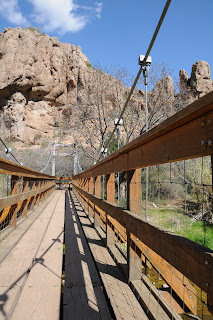
Good news hikers---the forest service has rolled out the Schultz Fire rehabilitation plan. Last summer, this blaze devastated many of our beloved hiking trails around Flagstaff's San Francisco Peaks including: Little Bear, Brookbank, Sunset,Heart and others. Recovery will take decades and the public has been invited to help in the restoration efforts. Please read the official press release below and then contact the forest service if you can pitch in!
NEWS RELEASE
U.S. Dept. of Agriculture
U.S. Forest Service
Coconino National Forest
For Immediate Release
March 28, 2011
Forest Service completes planning process for Schultz Long-Term Rehab Projects
Flagstaff, AZ – The Flagstaff Ranger District is happy to announce the completion of the planning process for the Schultz Fire Long-Term Rehabilitation Projects on the Coconino National Forest. These projects will improve public safety in the areas affected by the Schultz Fire as well as address the long-term recovery needs of forest resources.
Rehabilitation efforts will include reconstructing and maintaining forest roads and trails, removing hazard trees, stabilizing cultural and recreational sites such as Bonito Amphitheater, promoting revegetation through planting and protection efforts, and constructing the Copeland Canal fence. Implementation on some projects will begin this spring and will continue over the next few years.
The public can anticipate opportunities to help with some of those recovery efforts, beginning with the Copeland Canal fence. “Now that we’re through with the planning portion, and we can focus on implementing the projects, we’ll be looking for ways to include the community,” says Mike Elson, Flagstaff District Ranger. “The first opportunity for the public to help is just around the corner. April 9 and 10, we’re seeking volunteers to help construct a fence around the Copeland Canal behind Fernwood.” The completion of the fence will allow the Forest Service to move forward with lifting the closure in the area. Other opportunities to volunteer in the more distant future may include trail reconstruction and replanting in portions of the burn area.
All of these long-term projects are separate from the ongoing work to address flooding. Continued Burned Area Emergency Response efforts will take place this spring and summer; an assessment in the spring will determine the effectiveness of the previous aerial seeding and mulching, as well as the need for further measures.
To learn more about the Shultz Long-Term Rehabilitation Projects, or for details on the Copeland Canal Volunteer Weekend, contact the Flagstaff Ranger District at 928-526-0866.
FIRE CLOSURE ORDER & MAP: http://www.fs.fed.us/r3/coconino/nepa/forest-orders/04-10-13-f.pdf
www.fs.fed.us/r3/coconino
www.twitter.com/CoconinoNF
www.flickr.com/photos/coconinonationalforest





































